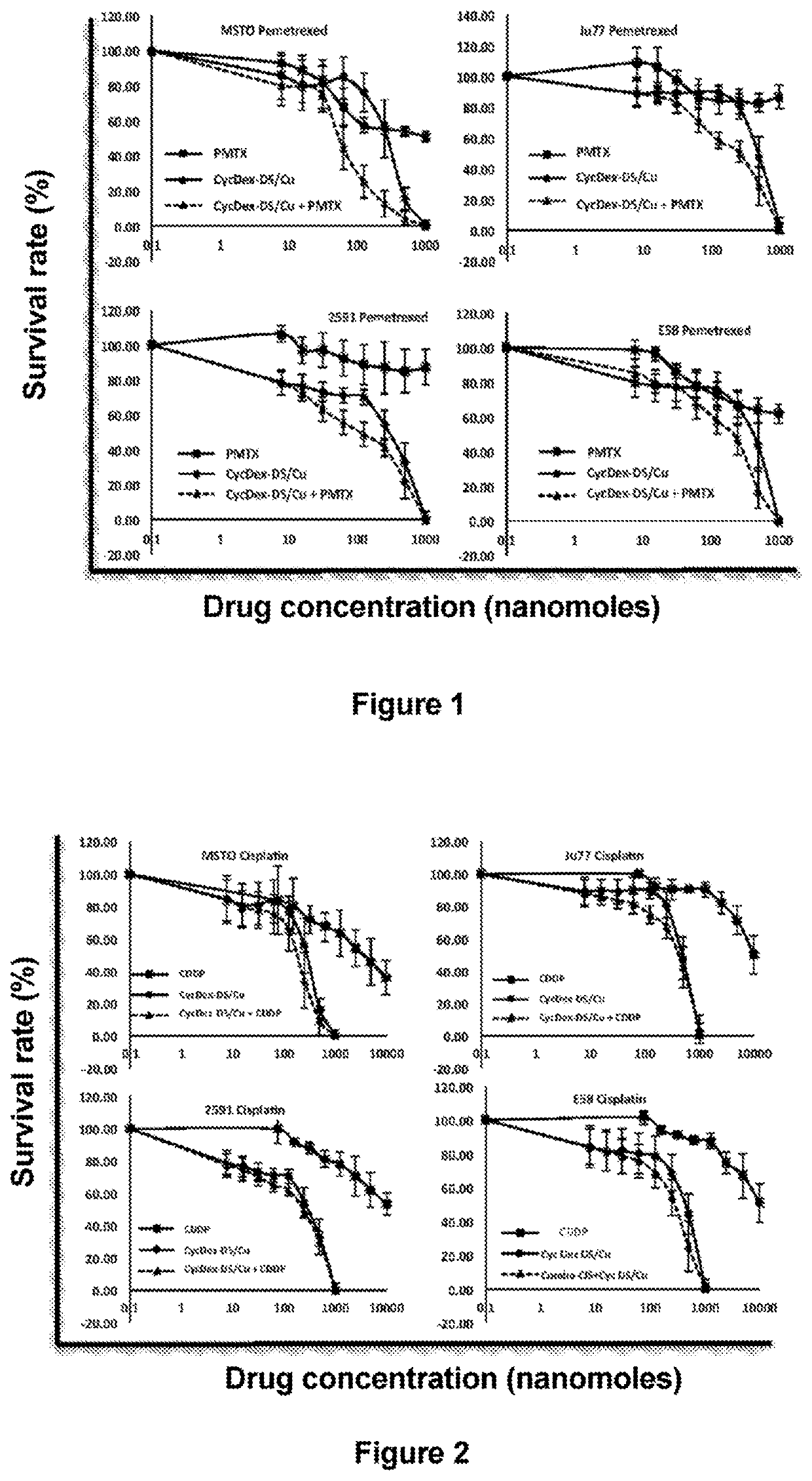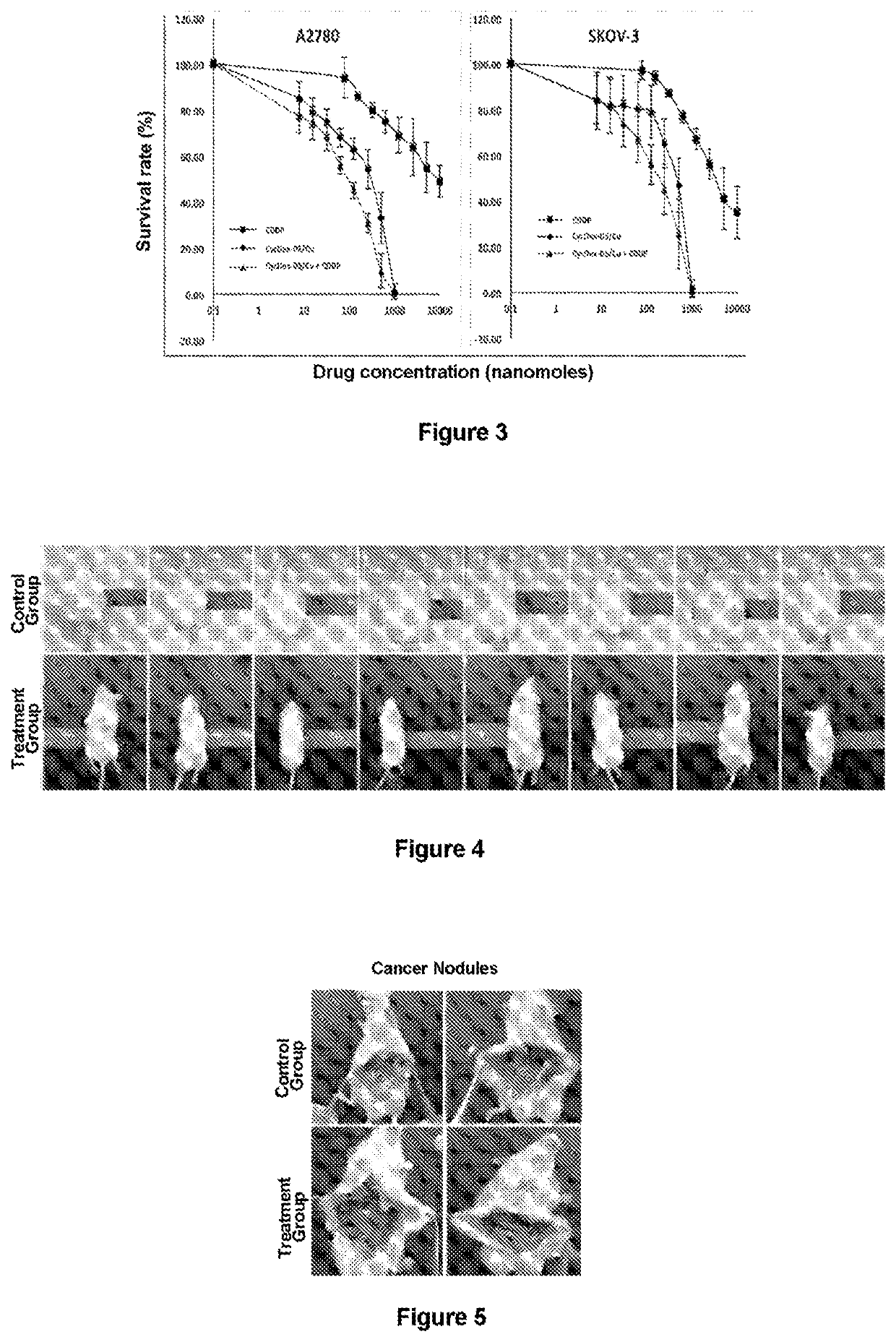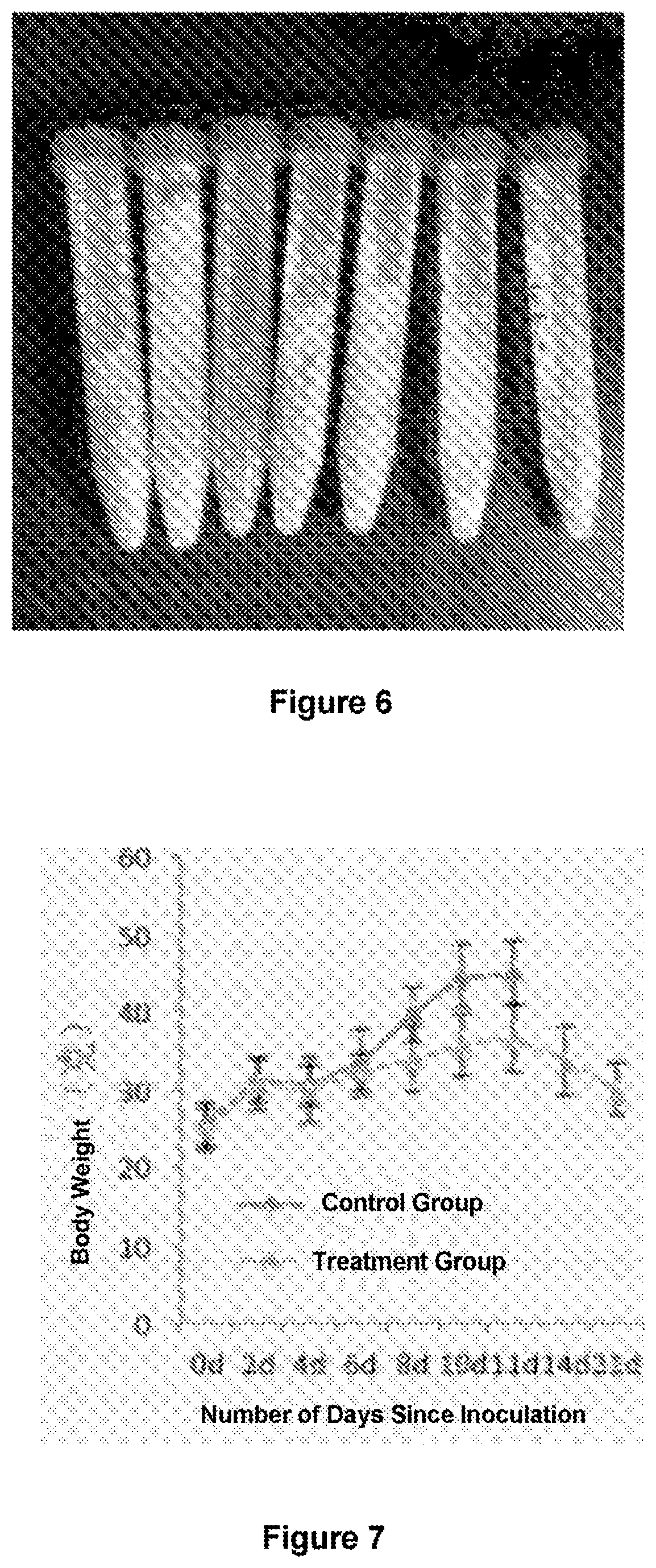Method for treating pleuroperitoneal membrane cancers by locally injecting disulfiram preparation
a technology of disulfiram and preparation, which is applied in the field of cancer treatment, can solve the problems of patients developing an uncomfortable response, headache, severe pulsation of the blood vessels of the head and neck, and affecting the treatment effect,
- Summary
- Abstract
- Description
- Claims
- Application Information
AI Technical Summary
Benefits of technology
Problems solved by technology
Method used
Image
Examples
example 1
Materials and Methods
[0073]MSTO, Ju77, 2591 and E58 mesothelioma cells were donated by Professor Peter Szlosarek of Queen Mary University of London and cultured in a DMEM medium containing 10% fetal calf serum supplemented with 10 mg / ml streptomycin and 2 mmol / L L-glutamine at 37° C. under a 5% CO2 atmosphere. Separate incubations were performed with pemetrexed, DS / Cu (disulfiram / copper gluconate) and cisplatin for 3 days. Cell survival was determined via an MTT assay.
Results
[0074]Inhibition of mesothelioma cells by DS / Cu was significantly more pronounced compared to pemetrexed and cisplatin, and combined administration with the two drugs produced even better results (FIGS. 1 and 2, Tables 1 and 2).
[0075]Inhibition of human ovarian cancer cells by DS / Cu was also significantly more pronounced compared to cisplatin, and a significant synergistic effect with cisplatin was also observed (FIG. 3, Tables 3 and 4).
example 2
Materials and Methods
[0076]S180 ascites cells were purchased from the Chinese Academy of Sciences Shanghai Cell Bank and cultured in a DMEM medium containing 10% fetal calf serum supplemented with 10 mg / ml streptomycin and 2 mmol / L L-glutamine at 37° C. under a 5% CO2 atmosphere.
Animal Experiments
[0077]S-180 cells were injected at a rate of 2.5×106 / animal into the abdominal cavity of male Kunming mice and the animals were randomly divided into two groups (8 animals / group). Beginning on the day after injection, mice in the control groups were orally and intraperitoneally injected with 0.1 ml of PBS, respectively while mice in the treatment group were orally administered 5 mg / kg of gluconate (CuGlu), followed by intraperitoneal injection of 5 mg / kg disulfiram 4 hours later. Drug administration was performed three times per week. The mice were weighed three times per week. Once the experiment was complete, the animals were sacrificed via cervical dislocation. The abdominal cavities of ...
example 3
Materials and Methods
[0079]MSTO mesothelioma cells and SKVO-3 ovarian cancer cells were cultured in a DMEM medium containing 10% fetal calf serum supplemented with 10 mg / ml streptomycin and 2 mmol / L L-glutamine at 37° C. under a 5% CO2 atmosphere.
Animal Experiments
[0080]MSTO mesothelioma cells and SKVO-3 ovarian cancer cells were injected at a rate of 3×106 / animal into female CD1 nude mice and animals were randomly divided into two groups (10 animals / group). Beginning on the day after injection, mice in the control group were intraperitoneally injected with 0.1 ml of PBS, while mice in the treatment group were orally administered 5 mg / kg of gluconate (CuGlu), followed by intraperitoneal injection of 40 μg / animal disulfiram 4 hours later. Drug administration was performed three times per week. The mice were weighed three times per week. Once the experiment was complete, the animals were sacrificed via cervical dislocation. The abdominal cavities of all mice were opened to observe and...
PUM
| Property | Measurement | Unit |
|---|---|---|
| diameters | aaaaa | aaaaa |
| concentration | aaaaa | aaaaa |
| body weight | aaaaa | aaaaa |
Abstract
Description
Claims
Application Information
 Login to View More
Login to View More - R&D
- Intellectual Property
- Life Sciences
- Materials
- Tech Scout
- Unparalleled Data Quality
- Higher Quality Content
- 60% Fewer Hallucinations
Browse by: Latest US Patents, China's latest patents, Technical Efficacy Thesaurus, Application Domain, Technology Topic, Popular Technical Reports.
© 2025 PatSnap. All rights reserved.Legal|Privacy policy|Modern Slavery Act Transparency Statement|Sitemap|About US| Contact US: help@patsnap.com



